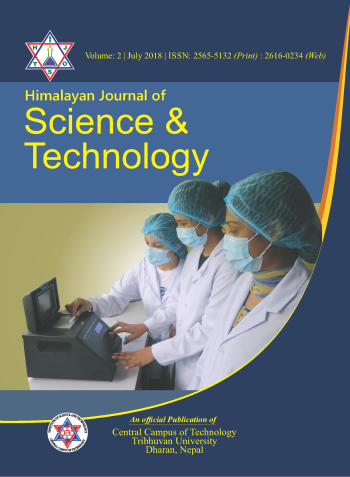Toxoplasma, Rubella, Cytomegalo and Herpes Viral Antibody Level in Patients at National Public Health Laboratory (NPHL), Kathmandu
DOI:
https://doi.org/10.3126/hijost.v2i0.25835Keywords:
TORCH, Bad Obstetric History, CLIA, Seroprevalence, SeropositivityAbstract
The primary infection of Toxoplasma gondii, Rubella virus, Cytomegalovirus (CMV) and Herpes simplex virus (HSV) abbreviated as TORCH has remained a major problem in the women of childbearing age in Nepal. The main objective of this study was to determine the seroprevalence of TORCH infections among the women of childbearing age visiting the National Public Health laboratory (NPHL), Teku, Kathmandu. A total of 314 blood samples were collected and tested for TORCH infections by Chemiluminescent Immunoassay (CLIA). Of the total 314 patients, different patterns were observed in the requested test series. Highest number of patients (243) requested for CMV IgM test while only 195 requested for the same for Rubella. The IgM seroprevalence rates were 4.20% (9/214) for Toxoplasma gondii, 5.12% (10/195) for Rubella, 4.91% (12/244) for Cytomegalovirus and 5.56% (13/234) for Herpes Simplex virus. Significant portion of the test exhibited the equivocal result making this latest technology further complicated. Equivocal results were 2.33 % (5/214) for Toxoplasma gondii, 3.58% (7/195) for Rubella, 3.27% (8/244) for Cytomegalovirus and 4.27% (10/234) for Herpes Simplex Virus. The seropositivity rate in pregnant women was 11.97 % (17/142), in which the seropositivity in pregnant women with Bad Obstetric History (BOH) was found to be 12.5% (13/104) and women without BOH was found to be 10.52% (4/38). The statistical association of any one of the TORCH infections with previous obstetric history was significant (p<0.05). The seropositivity rate was the highest for HSV infection followed by Rubella, CMV and T. gondii.
Downloads
Downloads
Published
How to Cite
Issue
Section
License
© Himalayan Journal of Science and Technology
All rights reserved.




